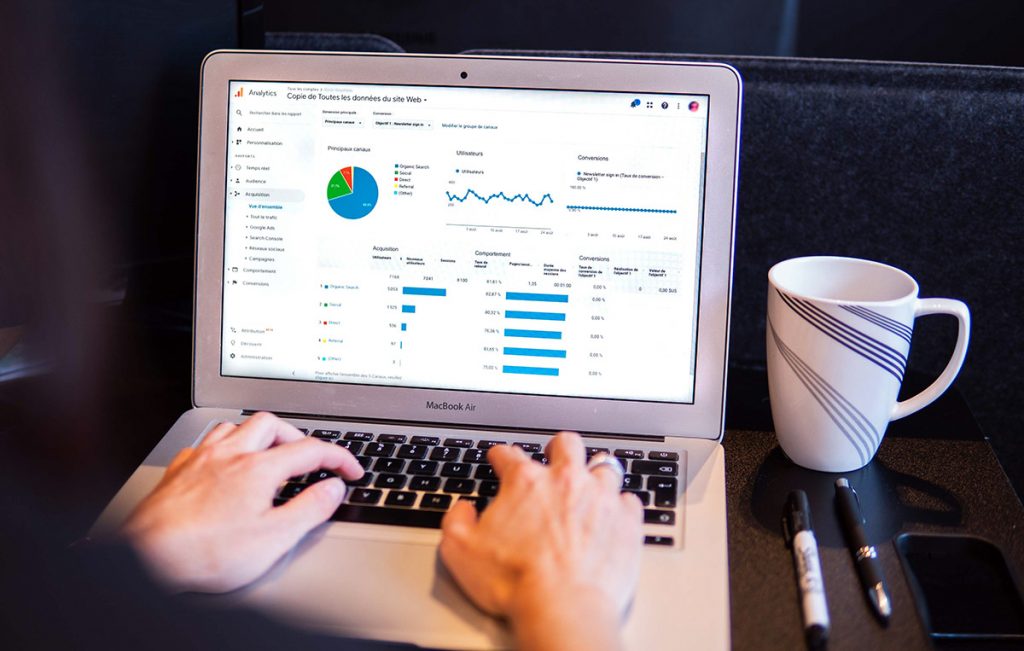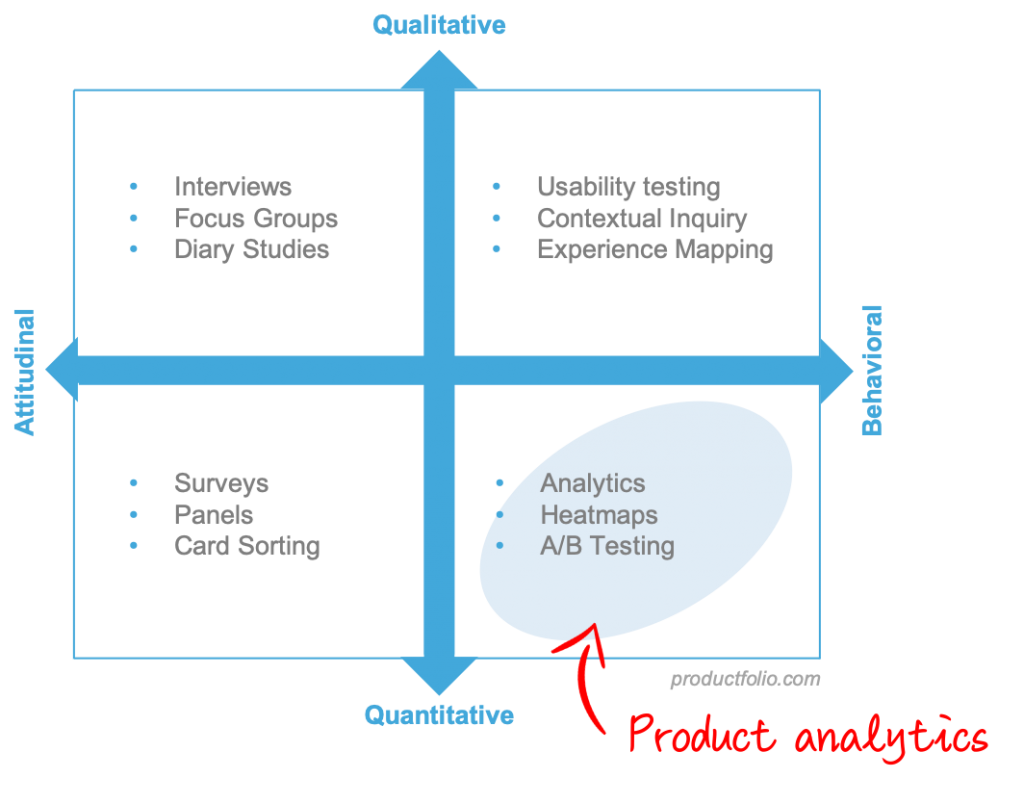
What Is Product Analytics?
Product analytics may be described as the process of capturing and analyzing data for insights that help in making informed product decisions. Typical information that analytics can provide include a customer’s journey through a product and most often used features. Product managers, developers, and designers depend on product analytics to evaluate the sort of experiences they are delivering to users. Data assists in diagnosing issues and honing performance.

Where Does Analytics Fit In?
Product analytics by its nature is quantitative rather than qualitative, and it describes user behaviors rather than attitudes. Whereas user research may help to provide insights about ‘why’ a user acts as they do, behavioral analytics is the other side of the coin, expressing what users actually are doing, by looking at aggregated traffic flows, session tracking, heatmaps, and even A/B testing as a method to validate hypotheses with real user activity.
There are two main parts of product analytics: tracking and analysis. You monitor, collect, and evaluate data to help you prove or disprove whatever hypotheses you may be having. This limits guessing in your decisions, basing them instead on statistically valid information.
Product analytics can be useful for providing answers to important questions. What are the demographics of customers? What is the typical customer journey like?
You can find analytics valuable for the following reasons, among others:
- Conversion Rate Optimization
- Reducing churn
- Removing bottlebecks in user flows
- Identifying the most rewarding user segments
- Validating user interests
Product analytics supports effective iteration. The data your team gathers through it enables you to improve your product in each cycle of development.
Web Analytics vs Event-Based Analytics
Traditional behavioral analytics is based on a web-based concept model, with pageviews as the fundamental tracking element. The popularity of mobile apps has given way to a more abstracted model that is less web-specific called event-based analytics. In this model, the application simply fires events for things we want to track such as button clicks, first-open events, or screen views.
Similar to web analytics, the analyst can create dashboards for key funnels and flows that sequence these key events (or page views) to show how users are progressing through a specific journey. This event-based model is a key part of how product-analytics platforms such as Pendo and Amplitude differentiate their products from traditional web analytics platforms such as Google Analytics at Adobe/Omniture.
When to Implement
Your product should have attained a significant level of adoption for analytics to be more useful. If you have yet to get a decent enough number of users, the insights you get won’t help much.
CXL Institute recommends having more than 2,000 customers for a B2C product and over 100 for a B2B product. Your team may do better sticking to traditional methods, such as surveys and interviews, when having a smaller user base.
Let’s consider some critical steps to take when you are ready to implement product analytics.
Start With Your Goals
Make a list of all events (actions that users take) that you want to track during customers’ interactions with your product. Pay special attention when doing this to ensure that you list all events. A missed step could deprive you of significant insight into user engagement.
S
Analytics can provide brilliant insights about user behavior, but nothing puts those insights more into focus, than having clearly defined goals and targets you want to reach. With these clearly defined, you can use behavioral analytics to track performance, identify gaps, and even diagnose causes of less than optimal performance, such as friction in a key activity funnel.
Consider how the data you will be gathering can lend to the achievement of your goals. It doesn’t make any sense investing in the tracking and analysis of data that adds no real value.


